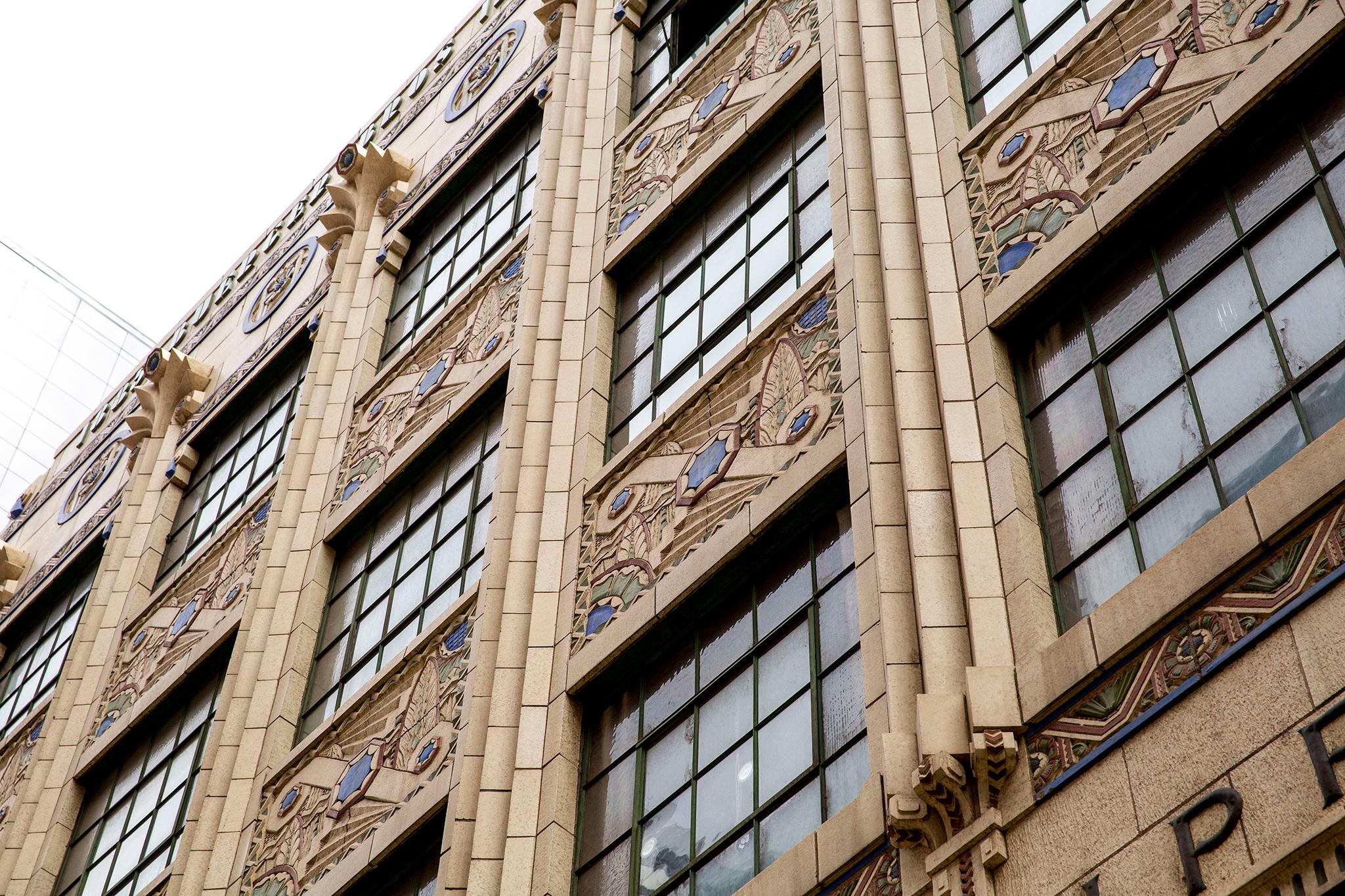Before it became rubble and then another empty lot in Denver buzzing with construction, Smiley's Laundromat stood for decades as a Colfax Avenue landmark.
Mind you, it wasn't the most striking building on the block. But you knew where you were as soon as you saw it, and for some people it was something of a community hub.
"It was a solid Colfax building," said Annie Levinsky.
Levinsky, who serves as the executive director at Historic Denver, said staffers unsuccessfully tried to preserve the historic property built in 1932. Her offices are located on Ogden Street, just blocks away from the former Smiley's building.
Smiley's demolition meant the city had one less example of a relatively rare architectural style in Denver: Art Deco, a distinct and often ornamental style. It's shorthand for Arts Décoratifs, according to Steve Turner, director of the Historic Preservation program at the University of Colorado Denver and formerly the state's preservation officer.
"To describe Art Deco to the average person, I would say, think of the buildings you saw in the Superman or Batman cartoons growing up," Turner said. "So it's really a style that is contemporary with that period of time when those cartoons are being drawn in the '20s and '30s."
Key elements of Art Deco include vertical lines, setbacks using materials like brick, decorative metallic touches, and geometric forms.
The style applies to buildings, but also visual arts, fashion and cars. The style is perhaps most often associated with coastal cities like Miami and New York (the Chrysler Building being perhaps the best example).
Turner said Art Deco primarily celebrated the post-World War I era and excitement about developing industrialism. As an architectural style, it was popular in the United States from the mid-1920 until about the late 1930s. It fell out of fashion, as Turner said it clashed with the Modernism movement.
Thankfully, there are some prominent examples still standing in Denver. Here are eight.
Catherine Mullen Nurses Home (1895 Franklin St.)
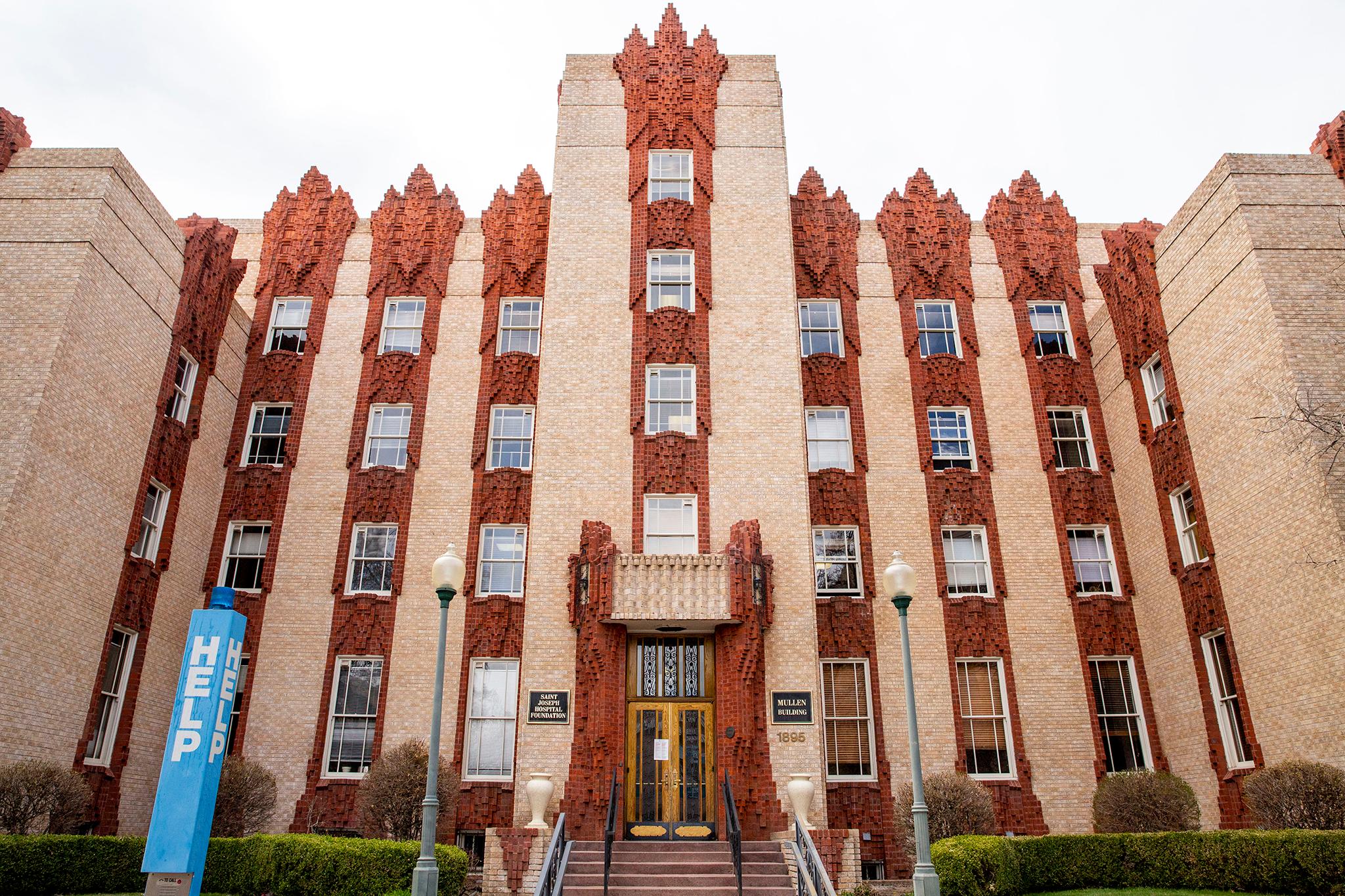
Turner calls this one of the best examples in the city. It's easy to see why. It's a striking building unlike anything else around it; it would stand out almost anywhere, but especially here, on a medical campus. Its ornamental pieces are instantly eye-catching.
"These big shafts of brick that are made in these big shafts that almost look like big clusters of wheat or something," Turner said.
Others liken it to flames. Whatever your interpretation, its contrasting, zigzagging features are a key element of the style. It was designed by legendary architect Temple Buell, who is perhaps most famous for designing the Cherry Creek Mall (and whose name will pop up again later). Turner called Buell the top practitioner of the style in Denver.
Buerger Brother Supply Company (1732 Champa St.)

Levinsky said this building is also sometimes called the Chamber of Commerce building.
"It's very ornamented, that's all terracotta as well. So you see how terracotta kind of lent itself to being Zigzag Moderne -- it's all the Jazz Age," Levinsky said. "It's an exuberant style."
Even for an ornate style, this is pretty ornate. It was designed by Montana Fallis, a famed Denver architect who designed several other buildings in the city (and one more building on this list.)
Mayan Theater (110 Broadway)

This building is hard to miss along such a busy corridor. And if it hadn't been for preservationists in the early 1980s, with help from then-Mayor Federico Peña, us modern Denverites would have missed out on its grandeur.
The theater was nearly demolished until it was saved by a local group called "Friends of the Mayan." It was in terrible shape -- the roof was leaking, and overall, barely maintained, one person told the Denver Post. It got a nearly $2 million renovation in 1986, according to its website.
"Federico Peña really was the tipping point that allowed the building to be saved," Levinsky said.
It's another masterful work designed by Fallis. Levinsky said the way the central figure on the Mayan façade is spread resembles a sunburst design, which is another element of the form. She said Historic Denver supported the building's preservation.
Bryant Webster Elementary School (3635 Quivas St.)
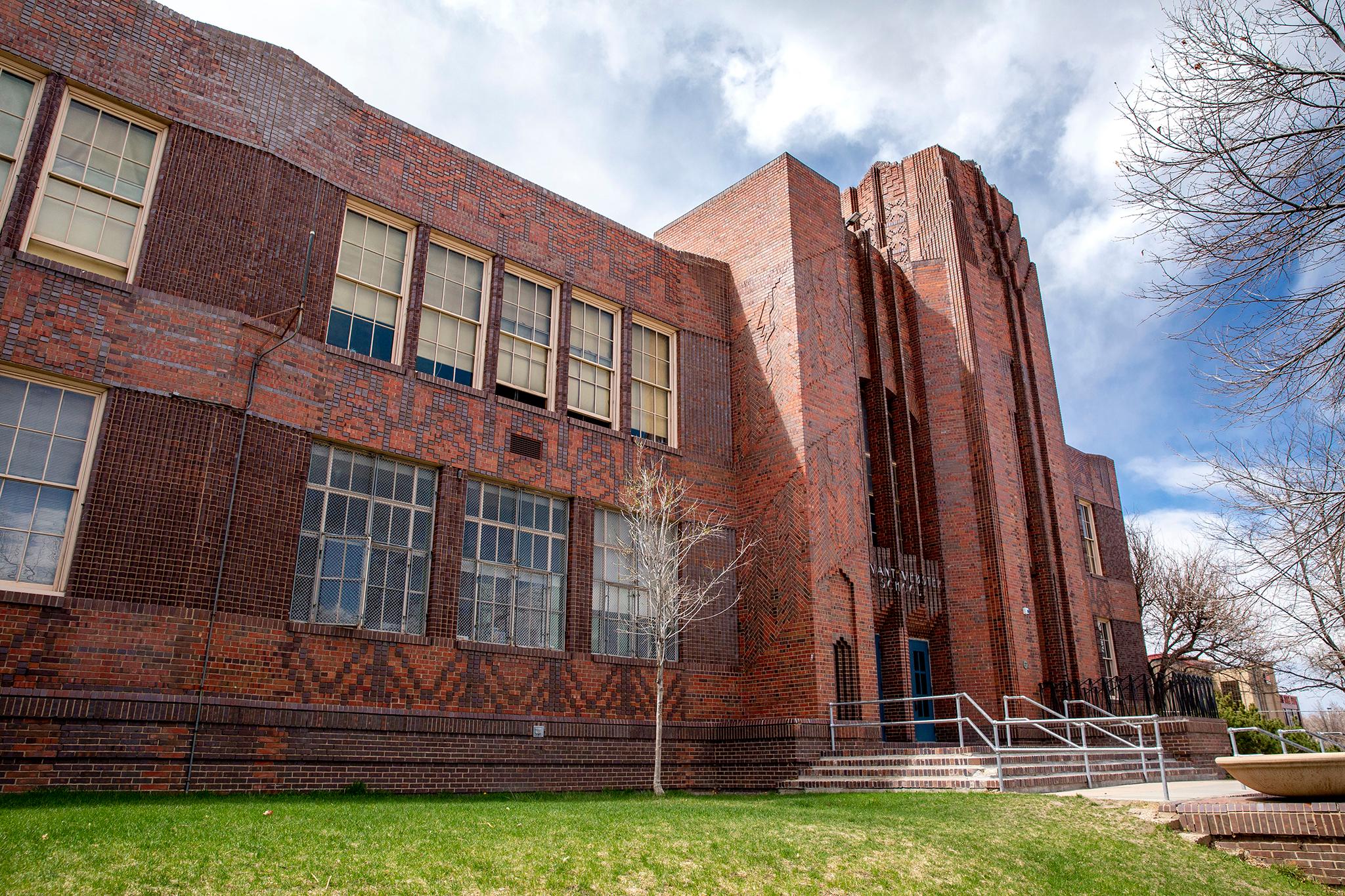
Built in 1930 and designed by G. Meredith and J. Roger Musick (both noted Denver architects), this deep red brick building is an example of Pueblo Deco, a mixture of Art Deco and the Pueblo architectural style, notes the city's landmark preservation office. It features prominent zigzag patterns, another element of the style. The building is still a school, housing the Bryant Webster Dual Language ECE-8 School in the Highland neighborhood. It was added to the National Register in December 1995, and it became a city landmark a year later.
"DPS has an amazing array of historic schools," Levinsky said.
Shangri-La (150 S Bellaire St.)

Is this the most beautiful home in Denver? One could certainly make that case, considering it's one of a few examples of Art Deco in a single-unit residential home. There are some apartment buildings built in this style (see 1165 Columbine St. in Congress Park), but a home like this is rare. Levinsky said it's likely the grandest example of it in the city.
Its backstory is equally interesting: It was built in 1937 and designed by Raymond H. Ervin, and it's modeled after a monastery featured in the movie "Lost Horizon," according to A Guide to Denver's Architectural Styles and Terms. The book notes most examples of residential Art Deco buildings are in the Hilltop neighborhood and the Bonnie Brae area. Levinsky said this house is an example of Streamline Moderne, a subset of Art Deco.
Paramount Theatre (1621 Glenarm Pl.)
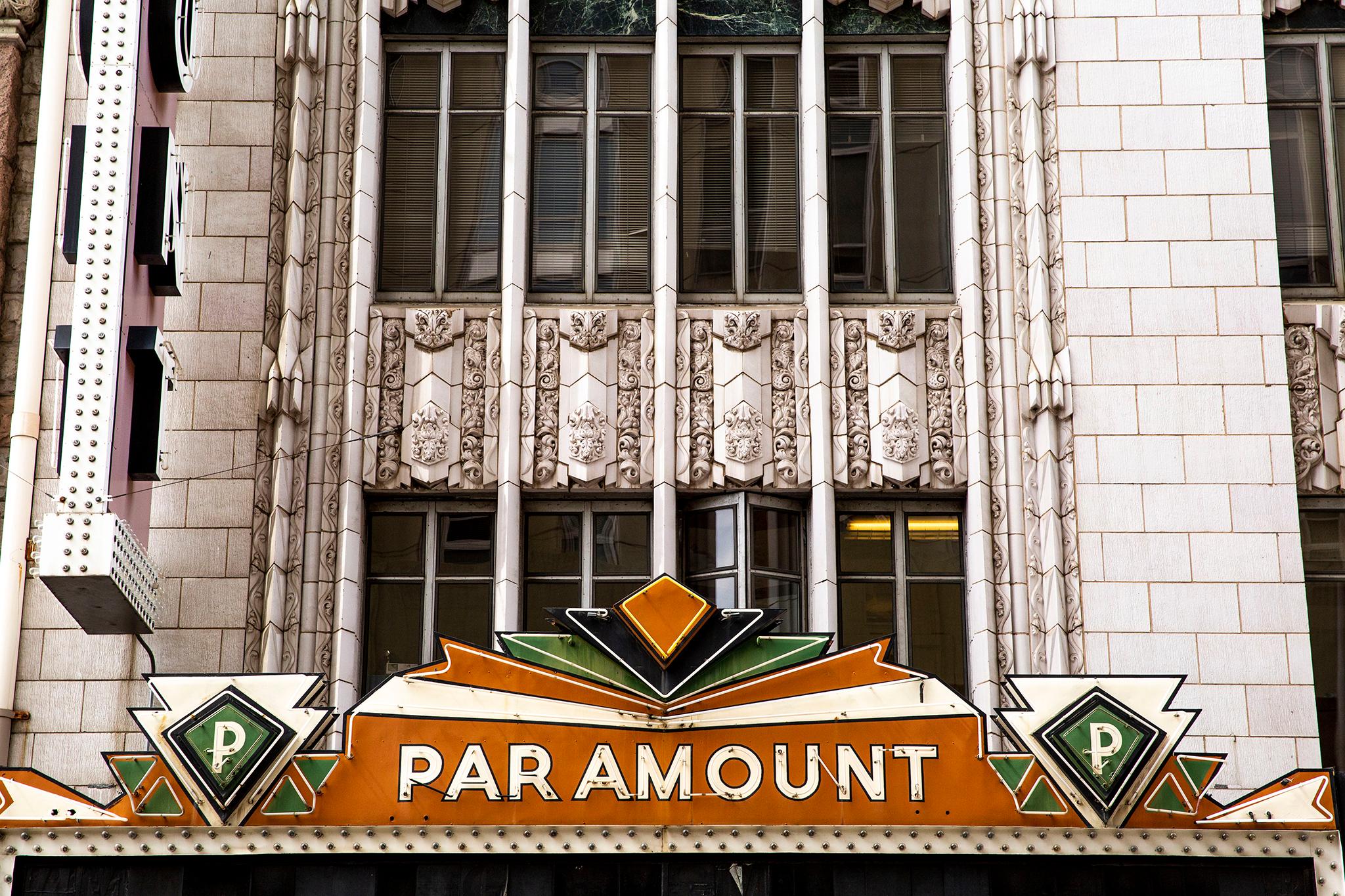
If you squint your eyes at night while this building's iconic signage is lit, you'd go back to an era when the city had streetcars and the Paramount only showed silent films.
The former movie house has a 1,865-person capacity and was built in 1930 and is another masterpiece designed by Buell, who designed dozens of other buildings in the state. Its exterior is made of terracotta, which Levinsky said is a common material in Colorado and is often used in buildings here. The alabaster-colored theater is home to a unique organ that used to be played to accompany silent films, according to the theater's website. It was added to the National Register of Historic Places in 1980 before becoming a city landmark in 1988.
American Woodmen Life building (2100 Downing St.)
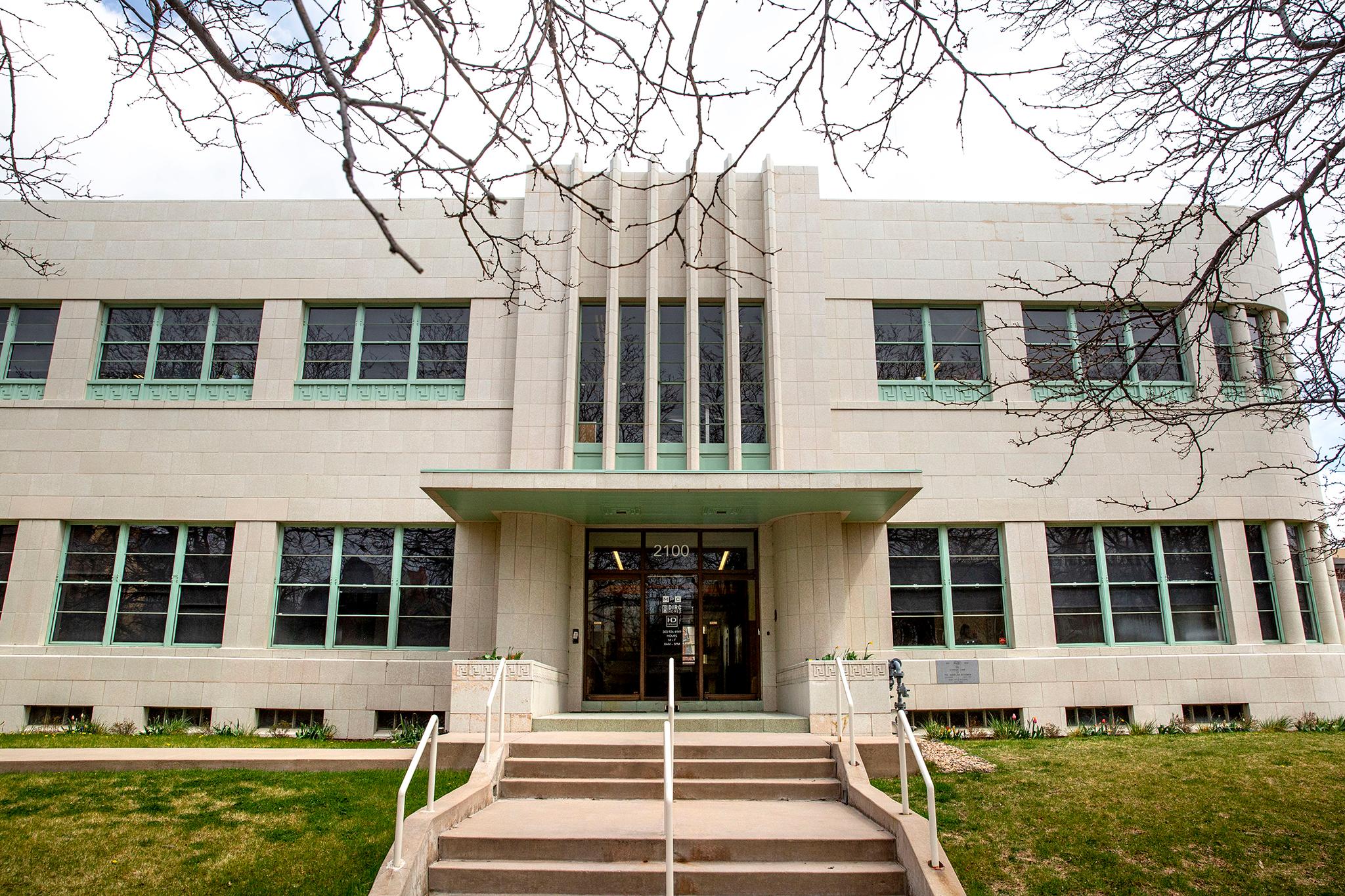
Built in 1950, the American Woodmen Life building is one of the newer Art Deco buildings in Denver and another example of Streamline Moderne. It was built as the headquarters of the Supreme Camp of the American Woodmen, a fraternal benefit society made up of African-Americans who sold insurance to African-American residents until 1994, when city documents say the company was forced to merge with its national parent organization.
It was designed by Colorado architect Gordon D. White, and its curved features and aqua-colored flourishes around the building are key characteristics of Art Deco. Like other examples in Denver, its exterior is made up of white terra cotta. The neighborhood landmark became a city landmark in 2009. It's now home to a real estate company.
Horace Mann school (4130 Navajo St.)

"Between the City Beautiful movement and World War II, the philosophy in DPS was that every school should be distinctive because it was sort of part of that neighborhood's identity and culture," Levinsky said. "They would hire the best architects in town to design them."
Case in point: This elaborate brick building now houses the Trevista at Horace Mann school. Its designer? Who else but Buell. It was called one of the best examples of schools he designed.
Built in 1931, it was meant to tower over the mostly one-story buildings in the area, serving as a visual landmark for the neighborhood, according to city documents. It was built when the area was referred to as "Little Italy," so the school served as a community center, leading to, as city documents suggest, the "Americanization of immigrant families," by introducing students to the national culture. It became a city landmark in 1995.
Honorable mentions go to 1165 Columbine St., Denver Fire Station 11, The Colorado Building, 1601 Grape St., and the Sherman-Grant Historic District. Oh, and the Denver Wastewater Management building, which Turner called neo-Art Deco since it was only built in 1993 but definitely looks like something out of a Batman comic book.
Did we miss any? Send us your thoughts at [email protected].

